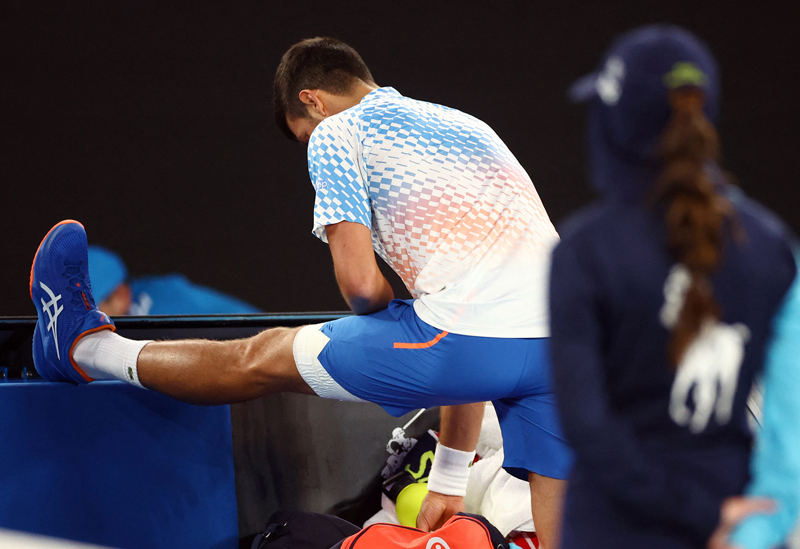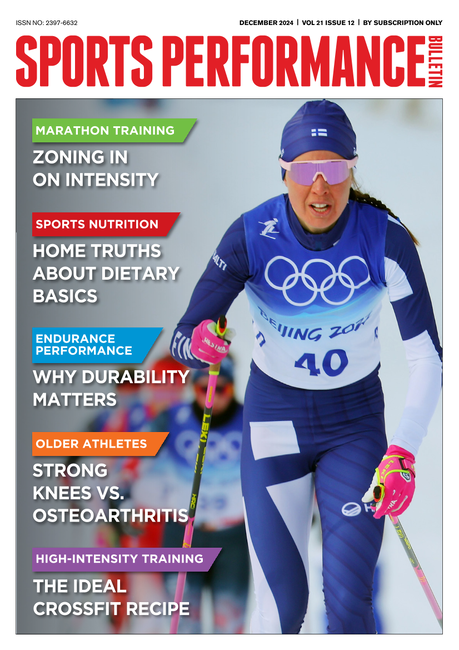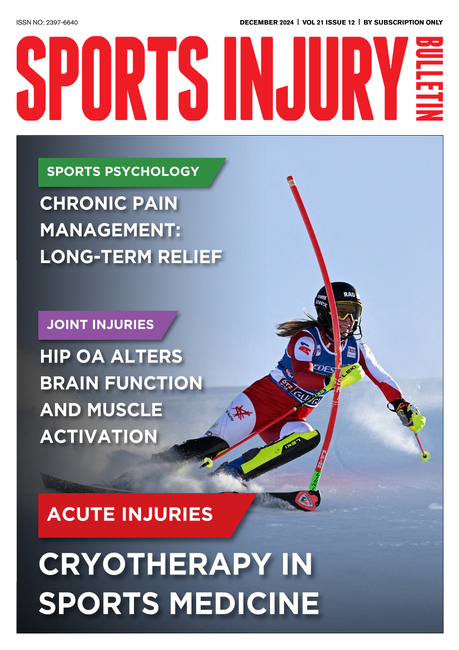You are viewing 1 of your 1 free articles. For unlimited access take a risk-free trial
Stretching your performance to the max
Andrew Sheaff looks at brand new research into exactly when and how athletes should incorporate stretching into a training program
To be successful in any sport, athletes need to be able to execute the full ranges of motion required by the sport. If an athlete can’t get into the required positions, or perform the basic maneuvers because of limitations in range of motion, he or she is not going to perform to the max!
At the same time, athletes need to have enough strength to control the range of motion they do have. If they can’t, they risk injury when they find themselves in extreme ranges of motions. But the importance of strength doesn’t end there. Strength is required to move the body and external objects at high speed and for long periods of time. Possessing strength in critical sport movements is a performance changer.
Strength and stretching interface
It seems pretty straightforward: both range of motion and strength are important for performance. To achieve these outcomes, we can assume that athletes need to stretch to improve range of motion and resistance train to improve strength. And if athletes work on both, they’ll be optimally prepared for competition. But if only it were so simple! Over the last two decades, research has begun to emerge that performing stretching prior to resistance training compromises resistance training performance. Due to the importance strength and power in many sports, this has led to the elimination of stretching protocols from many training programs.
However, stretching remains a viable tool for improving range of motion, and range of motion remains an important part of improving performance. For practitioners and researchers alike, this had created a challenging dilemma; how can athletes achieve both aims if one aspect of training appears to negatively affect the other? Observant coaches and practitioners have also questioned whether it is the placement of stretching that is the problem, or the mere presence of stretching. If it is just the placement of stretching that leads to negative outcomes, simply placing stretching at elsewhere in the program could solve the problem.
New research
To try and find a solution to the above dilemma, new research by a group of Italian researchers has tried to answer these questions(1). In this research, the team of scientists examined all of the previous studies that have investigated the long-term impact of stretching programs on the development of muscular strength. They were particularly interested in studies that assessed muscular strength following stretch training versus no training. They also looked for studies comparing resistance training alone with the combination of resistance training and stretching.
The scientists found 35 studies that met their desired criteria, which together included a total of 1,179 subjects. The training programs in this group of studies lasted between four and 24 weeks, with the average program lasting eight weeks. Training was performed 3-4 times per week, totaling approximately four minutes of stretching per session.
To determine the cumulative findings of these studies, the researchers performed a sophisticated statistical analysis on the data. In particular, they wanted to know the impact of stretching on muscle strength, whether adding stretching to strength training influences strength outcomes, whether the placement of stretching (in relation to strength) influences strength improvements, and whether the duration of a stretching intervention affects strength gains.
What they found
The results were conclusive. Over the longer-term, stretch training has a positive impact on dynamic muscle strength – ie the kind athletes want and need. Moreover, stretching had a neutral effect on isometric (static) strength (see figure 1). Any fears that stretching negatively affects long-term strength can be laid to rest. In terms of the impact of stretch training on resistance training programs, this too proved to a win for stretching. The results found that including stretching in a resistance training program did not adversely affect the development of strength.
Figure 1: Effect of stretching interventions when added to strength training
The thick black vertical line represents a neutral outcome – ie adding stretching to strength training had no effect either way. Any diamond sitting to the right of the line shows a beneficial effect of stretching when added to strength training. Diamonds situated to the left shows a harmful effect of stretching on strength. More stretched diamonds show that there was a great variability of results from the studies analyzed. It can be clearly seen that stretching after or away from strength training (green dots) resulted in additional strength gains – likewise for interset training. However, stretching before strength training (red dot) resulted in a significant negative effect of strength outcomes.
However, there are some important caveats. When stretching is performed immediately prior to resistance training (figure 1), it appears that improvements in strength are compromised. However, when stretching is performed in between sets of resistance training, any negative effects of stretching are no longer seen. To add more nuance, it appears that the longer that stretching is combined with strength training, the more likely one is to experience a negative outcome.
Take-home message for athletes
This study confirms it is possible to embark on a stretching program in conjunction with a strength training program, and also that improvements in these programs are not mutually exclusive. If you need to improve range of motion, stretching remains an effective tool. Importantly, rather than compromising muscle strength, it appears that chronic static stretching can actually improve strength over time. For those that need to be both mobile and strong, they can safely embark on programs dedicated to both without concern that stretching activities will compromise strength.
However, there are planning strategies that one should consider to ensure that the stretching program doesn’t negatively affect strength training progress. ost importantly, avoid stretching immediately prior to strength training. Doing so appears to have a negative impact on performance, and this impact tends to accumulate over time. If possible, perform static stretching routines well away from strength training sessions.
If you do feel the need to stretch in close proximity to strength training sessions, you should stretch in between sets of resistance training activities, commencing after starting the resistance training session (ie interset training). This seems to eliminate the negative impact of stretching on strength development, while still allowing for one to stretch in conjunction with strength training.
However, this strategy should be used for short amounts of time to avoid any long-term compromises in strength that may come with combining stretching and strength training. If it’s important to do so in the short-term to address limitation in range of motion, feel free to take this approach. Or if stretching and strength training must be combined due to time constraints, they can be an appropriate strategy, if is a temporary one. In the short-term there are likely no drawbacks and perhaps even benefits; however, although this does not appear to be the case over the longer-term, where stretching programs of over six weeks duration appear to impair strength development.
Achieving appropriate range of motion and developing the necessary strength are both critical for long-term sporting success. While there is the general perception that stretching will have a negative impact on strength, it appears that this not the case. In fact, the opposite seems to be true. By optimizing the placement of stretching routines, range of motion can be improved without compromising strength.
References
1. Strength Cond Res. 2022 Dec 16. doi: 10.1519/JSC.0000000000004400. Online ahead of print
Newsletter Sign Up
Testimonials
Dr. Alexandra Fandetti-Robin, Back & Body Chiropractic
Elspeth Cowell MSCh DpodM SRCh HCPC reg
William Hunter, Nuffield Health
Newsletter Sign Up
Coaches Testimonials
Dr. Alexandra Fandetti-Robin, Back & Body Chiropractic
Elspeth Cowell MSCh DpodM SRCh HCPC reg
William Hunter, Nuffield Health
Keep up with latest sports science research and apply it to maximize performance
Today you have the chance to join a group of athletes, and sports coaches/trainers who all have something special in common...
They use the latest research to improve performance for themselves and their clients - both athletes and sports teams - with help from global specialists in the fields of sports science, sports medicine and sports psychology.
They do this by reading Sports Performance Bulletin, an easy-to-digest but serious-minded journal dedicated to high performance sports. SPB offers a wealth of information and insight into the latest research, in an easily-accessible and understood format, along with a wealth of practical recommendations.
*includes 3 coaching manuals
Get Inspired
All the latest techniques and approaches
Sports Performance Bulletin helps dedicated endurance athletes improve their performance. Sense-checking the latest sports science research, and sourcing evidence and case studies to support findings, Sports Performance Bulletin turns proven insights into easily digestible practical advice. Supporting athletes, coaches and professionals who wish to ensure their guidance and programmes are kept right up to date and based on credible science.











